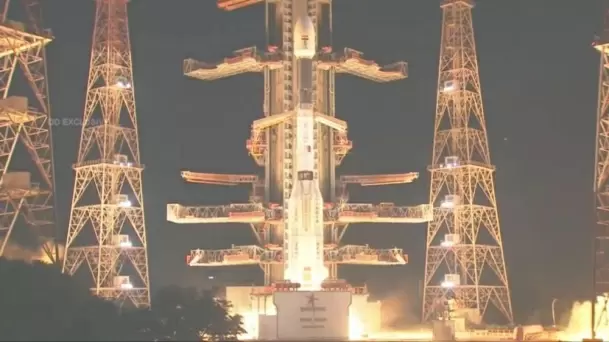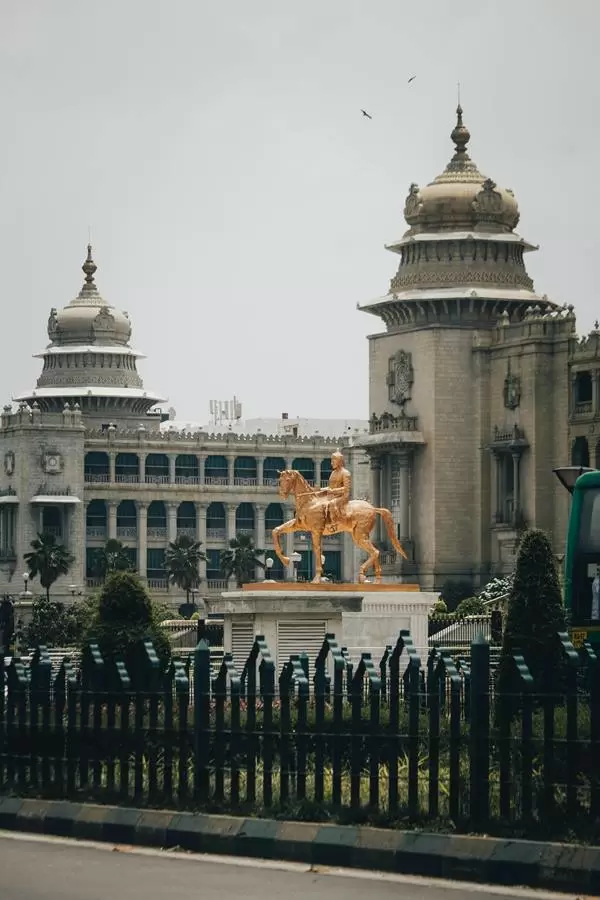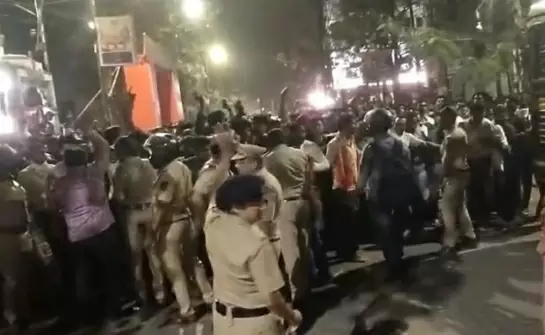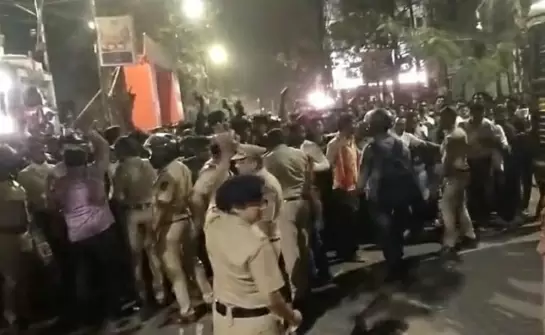Failure of pyro or fuel systems resulted in India losing rocket & satellite
Sriharikota
12-August-2021

Photo:IANS
Failure of the ignitor or failure of the cryogenic engine to get ignited or even the failure of the avionics in sending the ignite signal are contemplated as the reasons for Indian rocket going down on Thursday early morning.
India's Geosynchronous Satellite Launch Vehicle-F10 (GSLV-F10) carrying the country's first Geo-Imaging Satellite (GISAT-1) lifted off from the spaceport in Sriharikota in Andhra Pradesh.
The failure resulted in the loss of rocket and satellite both valued over several hundred crores of rupees and also the revenue opportunity for 10 years.
The GISAT-1/EOS-03, with a life span of 10 years, would have been the country's first eye in the sky or earth observation satellite to be placed in geostationary orbit.
The Indian Space Research Organisation (ISRO) in a statement after the rocket's failure said: "GSLV-F10 launch took place on August 12, 2021 at 0543 Hrs IST as scheduled. Performance of first and second stages was normal. However, Cryogenic Upper Stage ignition did not happen due to technical anomaly. The mission couldn't be accomplished as intended."
What is that technical anomaly is the moot question.
Watch This TWL Video
"The cryogenic engine is a complex system and the failure is not due to design flaw," former Chairman of Indian Space Research Organisation (ISRO) G. Madhavan Nair told IANS.
According to him, the ignitor/pyro systems could have ignited but the fuel might not have due to various reasons.
Nair also agreed the rocket being kept idle for more than a year after it was readied for flight could have also affected the functionality of the components.
"It could be a failure in avionics in sending the ignite signal. Or the failure of igniter which is a pyro element where testing is done for few in a batch rather than every component. Moreover, there is long storage of components due to pandemic delay causing some unnoticed component failure in the ignition system," another space sector official on the condition of anonymity told IANS.
"Cryo stage did not ignite is the cause - this is officially announced and can be seen in the curve," the official added.
Originally the GISAT-1/EOS-03 was slated for launch on March 5, 2020, but hours before the launch, ISRO announced postponement of the mission owing to some technical glitch.
Soon after, the Covid-19 pandemic and the lockdown delayed the mission. The rocket had to be dismantled and cleaned up.
Subsequently, the GISAT-1/EOS-03 launch was slated for March 2021 but due to problems in the satellite's battery side, the flight got delayed again.
With the replacement of the battery, the satellite and the rocket were being readied for their flight at Sriharikota when the second wave of Covid-19 swept in, affecting many at the rocket launch centre.
Another space sector expert preferring anonymity told IANS: "On seeing the videos captured by the cameras fixed at the rocket, one can conclude as to the cause of loss."
"During launch ISRO did announce separation of the heat shield, shutting off of the second stage and firing of the cryogenic stage. Success of cryo ignition and normal thrust was announced," the expert said.
"I would not be surprised that the heat shield did not get separated, though telemetry may be correct and the vehicle veers out of trajectory due to excess load of heat shield, apart from the satellite load," he added.
"Non separation of heat shield even with four way redundancy and yet sending right telemetry, has been seen earlier. This phenomenon was seen in PSLV 39 launch with IRNSS-1H, on 31st August 2017. But due to the presence of an on board camera, the non separation of the heat shield was detected. Otherwise it could have been passed off as malfunctioning of the last stage of the rocket," the expert remarked.
However Nair does not agree with this possibility.
"After the separation of the heat shield the rocket had travelled for several seconds on the plotted path. Had the heat shield not separated then the rocket would have veered away much earlier," Nair said.
According to him, detailed flight data will be available a couple of days later.
The reason(s) for non-firing of the cryogenic engine will have to be probed by ISRO, if a faulty component was the reason.
Earlier in a GSLV rocket that went up, a component with higher dimension than what was designed was fixed and the rocket failed.
The Indian space agency does not insure its rockets and satellites launched from the country.
Ironically, Thursday's failure comes on the birth anniversary of Vikram Sarabhai, the father of India's space sector.
The 57.10 metre tall, 416 tonne GSLV-F10 lifted off from the second launch pad at 5.43 a.m.
With a strong deep growl rose into the sky breaking free from the second launch pad here at the Satish Dhawan Space Centre.
The GSLV-F10 is a three stage/engine rocket. The core of the first stage is fired with solid fuel and the four strap-on motors by liquid fuel. The second is the liquid fuel and the third is the cryogenic engine.
Everything went well as planned till the cryogenic engine got into picture at about five minutes into the rocket's flight.
The ISRO had also announced the commencement/ignition of the cryogenic engine.
Just over five minutes into the rocket's flight, the mission control centre at the spaceport here tensed up.
The rocket was seen on the telemetry screen veering away from its plotted path. There was no data coming from the rocket.
Experts said the rocket and the satellite would have burnt in the atmosphere while falling down.-IANS
More Headlines
Manglam Group Invests ₹1,000 Crore in Hospitality Expansion Across Rajasthan
Chai Kings Secures ₹24 Crore Series A Funding from AVT for Expansion
Amritsar Temple Blast: One Suspect Shot Dead, Another on the Run
Chennai Police Hunt Suspects After Brutal Kotturpuram Double Murder
Haryana BJP Leader Shot Dead Over Land Dispute On Holi: Police
Manglam Group Invests ₹1,000 Crore in Hospitality Expansion Across Rajasthan
Chai Kings Secures ₹24 Crore Series A Funding from AVT for Expansion
Amritsar Temple Blast: One Suspect Shot Dead, Another on the Run
Chennai Police Hunt Suspects After Brutal Kotturpuram Double Murder
Haryana BJP Leader Shot Dead Over Land Dispute On Holi: Police










